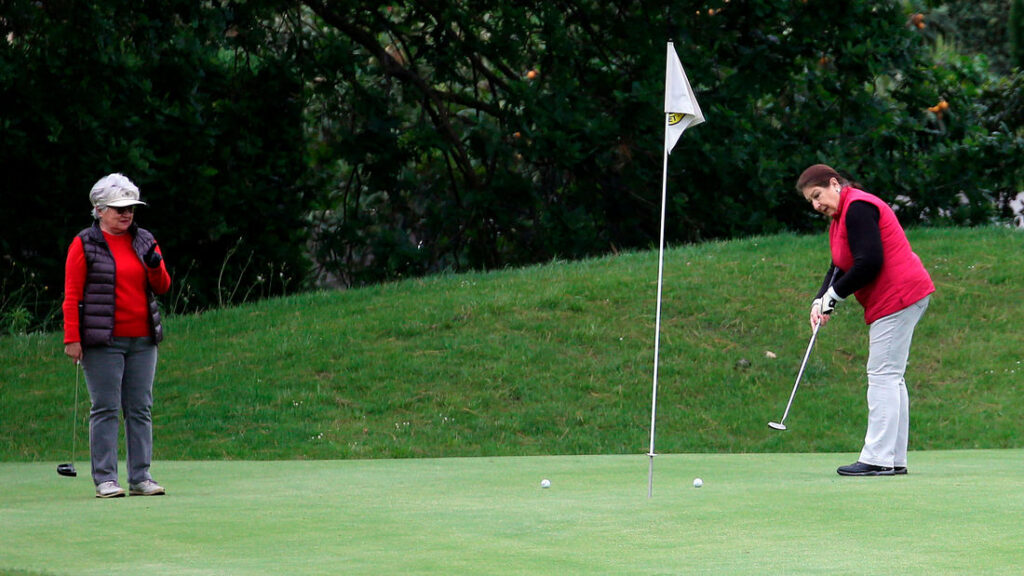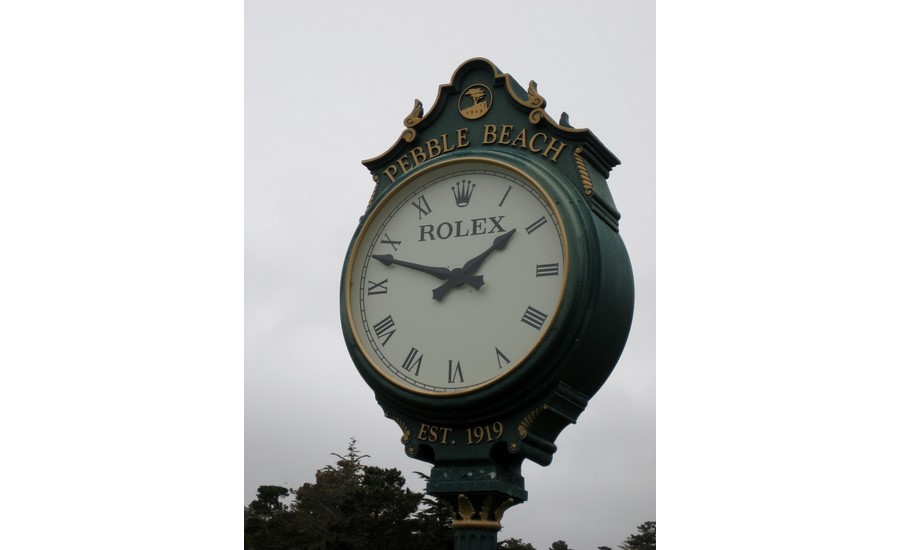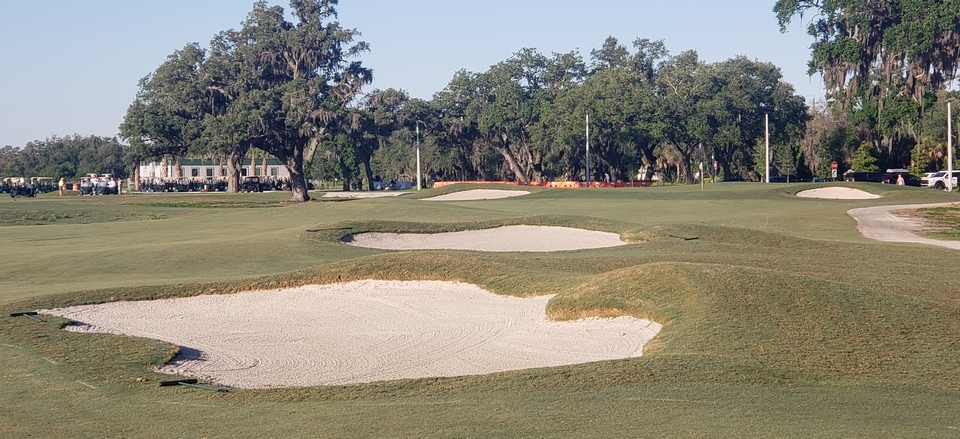Sustainability Series
Part 1, Part 2, Part 3, Part 5, Part 6

Estimated reading time: 18 minutes
Ask most golfers the number one issue that impacts whether they opt to play golf and you will hear again and again the main concern -- how much time will it take?
In years past the qualitative dimension was the acid test for enjoyment. Now the quantitative has jumped to the front in terms of overall satisfaction and whether the appetite to play again is stoked or undermined.
Golf is now on the clock.
In 2022 people are engaged in a wide range of activities. Squeezing more out of the time available is now a paramount consideration with lives busier than ever before. People are on the go -- from the moment they wake up to the time they place their head back on the pillow. It is in that world that golf now operates. Fulfilling the needs of one's customers means a consistent commitment to respecting the time they set aside to play golf.
Today's time clock is pushed and pulled into a wide variety of directions -- family and work at the top of the list -- with all having to be carefully choregraphed. In years past, people adjusted to the situation they faced on the golf course and if a day at golf literally meant that -- well that was just fine.
Not anymore.
Golf course owners are keenly aware leisure time is more guarded and rigorously measured. Facilities failing to assure golfers that time spent will be respected and acted upon in a prompt manner will find the patience level of today's golfers far less tolerant than in years past. Losing customers can become a torrent instead of a drip-by-drip outcome. Instead of making complaints -- the net result will be deafening silence with those looking elsewhere to meet their recreational cravings.

Although the pandemic has seen a surge in players and golf rounds -- the entertainment value of golf is now held against other competing sports and pursuits. Can golf adjust and meet those needs? The answer to that question is clearly at the forefront in keeping golf both relevant and sustainable.
Two leading experts were contacted to provide their perspectives on the topic. The science of golf has brought to the forefront a deep dive into the analytics of how course operators, irrespective of type, can honor the time constraints golfers face.
Awareness of the realities today's golfers face is paramount. Like any customer base, it rests with ownership / management in consistently implementing proactive steps to keep the needs of their customers front and center.
Those failing to do so run the risk of being permanently pushed off the consumer radar screen.
The old adage that money can be squandered but can also be reacquired is true. However, the more valuable commodity is time -- once lost it is lost forever. Golfers understand that clearly and pity those facilities that fail to have the issue at the top of their respective agendas.
Will that time be wasted or harnessed smartly? That is the central question in the ongoing debate and one which the two experts below discuss.
Yes, the clock is indeed ticking.
Is four-hour golf possible for all levels of play and at the various type of golf facilities that exist?
RICCIO: They happen all the time. According to my study “Pace of Play in America” (found via three45golf.org), the average first round of the day is about 3 hours and 45 minutes, meaning the majority of those rounds are less than 4 hours.
Those are unimpeded rounds since there are no groups ahead. The overall average round is about 4 hours and 17 minutes, with about 30 minutes of that waiting for the group ahead to clear. Most of that 30-minute total is due to short tee intervals set by management. A combination of course-appropriate tee intervals and some training for group and individual golfer behaviors could increase the number of four-hour rounds substantially.
SIEBER: A four-hour round is a baseline. That said, good flow of play is probably more important than a set, defined time and it is flow that makes for great player experiences. Goal times depend on course layout, course length, difficulty, set-up and a range of other factors, which vary from one course to the next.
Players might want a quick round at their local courses, but may want to spend more time appreciating the scenery and challenge, when playing at a destination course, such as Pebble Beach or Bandon Dunes. We often find course goal times - based on data - that range between 3.50 and 4.30 hours.
With our solution, clubs can use dynamic goal times, where they start the day considerably faster for a number of tee times - not just first out - and then work towards a slower goal mid-morning - this results in better experiences and a much-improved average round time - very often making a four-hour round a controllable and deliverable reality.
If you had to guess the percentage of clubs that are plagued by slow play and don't really alleviate the player pain caused by it -- what would you say the figure is?
SIEBER: I would challenge the industry to ask this question differently. With 74% of players stating pace and flow of play being critical to their experience, is it really good enough to wait for complaints or do we have an opportunity to pay attention and do this really well for our players and thus create a competitive advantage for our golf course - even for the sport as a whole?
The 60% / 70% of clubs that experience slow days when it gets busy certainly have this opportunity to improve. The good news is, technology provides easy to implement, proven and measurable solutions. These courses flow better, players are happier and there is opportunity to safely add more rounds and increase revenue - a win all around.
RICCIO:: The vast majority have not made any improvements. Of America’s 15,000 courses, only a few hundred have made improvements. Unfortunately, course managements have ignored the problem and blame slow play on the golfers even though management shares much of the responsibility.


Do many facilities simply "talk" about fixing slow play and really don't want to invest in doing something about it because they don't wish to deal with the pushback that likely will come from those players identified as slow?
SIEBER: There is often a lack of awareness and a club does not need to have a slow play “problem” in order to manage flow of play better and improve the player experience. This can hold late adopting courses back from investing.
Without fail, once a course switches on technology, they all wish they had done it sooner. Also players are surprisingly compliant, once the data and facts take potential conflict out of pace of play conversations, and pave the way for a neutral discussion. Players start to take pride in the pace at their club, for the benefit of all.
What causes clubs to fail to correct the situation they face?
SIEBER: Many courses don’t have line of sight of their course traffic. They’re reliant on monitoring play manually, either when complaint calls come in, or using marshals to try to identify where possible issues are, and who is causing these. Without access to data and tools to objectively and efficiently identify and resolve live pace issues and truly understanding the course’s flow, bottlenecks and challenges with analytics, it is near impossible to sustainably resolve and improve the pace, there are simply too many moving parts to consider and observe with manual means.
How do you make the majority of your club contacts -- is it through referrals or something else?
SIEBER: The business of golf is largely relationship driven - we are fortunate to have many fantastic long term course partners, who have achieved success by utilizing optimization technology and are willing to share their positive experience with others.
We also offer educational webinars and information for clubs to learn how to manage their on course operations more efficiently. At this point we work with 35 of the top 100 clubs in the US and over 400 clubs, both private and daily fee, that are in the middle to upper end of the market.

Give an approximate percentage amount to the following slow play causes: How much of slow play is caused by players playing from the wrong tee boxes? How many facilities simply don't provide enough time interval between groups? And is much of slow play tied to players simply not being ready to play when it's their turn to do so?
SIEBER: This is unique to each course, that said, our data observations confirm, most players do play off the correct tee boxes.
Properly managed tee time intervals should be a great asset and a valuable tool for operators, but they need to be accurately applied - in line with the measured cadence of the course, in order to be effective.
The challenge with slow play is that it compounds and impacts so many players when one group falls out of position, so yes, playing ready golf and awareness of the group in front is a big factor.
Can on-course personnel such as rangers or the more politically correct phraseology -- player assistants -- be helpful?
RICCIO: The assumption that rangers - even when well trained, supported and equipped, can have an influence is misguided. Most courses with rangers have tee intervals of 8 minutes (even 7 minutes) which, when the tee sheet is filled, guarantees a 5-hour round whether or not individual golfers have good pace behaviors.
How much of what people see on television through professional golf events influences their behavior when playing?
RICCIO: The issue on the tours is course set up, not so much player behavior, although even pros can exhibit bad personal traits such as not being ready to hit when it is their turn. The biggest problem is TV showing players taking two minutes to line up a putt. It reinforces bad behavior by average golfers. Lee Trevino used to say to amateurs “miss it quick.”
SIEBER: Professional golfers have a major responsibility to live and practice positive golf etiquette, as they get watched by millions and yes, sometimes amateur golfers take their pre-shot, green reading or putting routine cues from the pros, but forget they need 20 or 30 more shots to play their round! A 30 second additional special pre-shot routine accumulated over 80 shots equals 40 extra minutes. Interestingly golf fans ‘feel’ the pain of slow pace at a professional event and often complain on social media about it. Unfortunately seeing ‘slow golf’ is a reason for players to say, ‘That’s exactly why I don’t play as much golf any more’ and young players may get deterred, because of the perception that ‘golf takes too long to play’.
John Catlin received a pace of play penalty in Round 1 of the PGA Championship.
— PGA TOUR (@PGATOUR) May 20, 2021
He finished with a 3-over 75 on Thursday.
Do you find a better involvement with your Tagmarshal program through private clubs versus those open to the general public?
SIEBER: Forward thinking golf managers recognize the impact that optimization technology has on the player experience, operational efficiency and revenue generation, regardless of course type, so we’re fortunate to see a high level of engagement across all course types. In fact, our partner split between daily fee and private clubs is roughly the same as the industry split of 60/40.
Why do you think slow play is tolerated in the USA far much so than how golf is played in the UK and Ireland?
SIEBER: There is a culture of playing ready golf in the home of golf, that is still growing in the US. Also, traditional UK and Irish courses are often shorter and functionally designed with limited transitions, which helps round times. The DP World Tour (formerly European Tour) invested in Tagmarshal in 2019, to assist in managing their pace of play effectively during tournament play, knowing the eye of the public is on the topic and they swear by the results they achieve.
RICCIO: I wish I knew. It does seem that different countries have different cultures regarding what constitutes a good day on the golf course. When I started playing it was generally considered ok to start a round and after 9 holes, break for lunch and spend nearly an hour before starting the back nine. The Brits would consider that crazy. I can confirm this but I think the golf culture regarding pace is even worse in Japan than in the US..
If you had one clear recommendation for golfers to play faster, what would you suggest they do?
RICCIO: Go to management and say increase tee intervals to 10 or 12 minutes. They should also say they would pay a premium on the green fee for that. Well, you may not want to hear that. You may want to hear what personal behavior should golfers do. Well, if that is what you want, I’d say move to your own ball and be ready to hit when it is your turn. (You can move while others are playing if done respectfully.)
Beyond that, the key is being sure your group clears the putting green in 3 or fewer minutes. It all backs up from the putting surface. That is the only place on the course which is not affected by the group ahead. You set the pace. Be ready to putt when it is your turn. Do not start your preparation only when it is your turn. This is where TV of the pros kills the pace.
What do you think of facilities that have opted on a periodic basis to create holes larger than what the rules provide in order to speed up rounds.
RICCIO: Nothing wrong with that except that it’s not golf. I’m really not sure if it would speed up play since it would just result in 8 footers being “white knuckle” putts rather than 3 footers.

What about reducing the number of clubs from 14 to 10 that one can use? Would that help speed things along?
RICCIO: There is nothing in my research to indicate that the number of clubs could be a factor in pace issues, one way or the other.
Give a letter grade overall to the key golf organizations in dealing with the subject. Is any specific organization doing better than the others?
SIEBER: One of the organizations that takes its mandate very seriously is the AJGA (American Junior Golf Association) based out of Atlanta, like us - they understand their role in instilling etiquette and pace awareness into the next generation of players. No doubt an A- where the minus is based on their own ambition to keep getting better. We’ve seen the European Tour and many smaller tours making strides in improving slow play, by educating their players and implementing systems to improve the pace and flow of play and provide efficient tournament management.
That said the pandemic has taken a lot of attention, first from a golf industry lockdown and need to survive period, into a high play volume and unprecedented growth phase. While the growth has been fantastic and players have been more forgiving and grateful to get out there and play, the post pandemic world will see golf compete for people’s time again and pace and the time it takes will become a big topic once more. As there is always more work that can be done, overall, we’d give organizations a B for 2021 and are excited to see what can be achieved in 2022.
RICCIO: In terms of grades for public or daily fee courses -- D or F: The management of most public courses, in order to make money and/or “satisfy” more patrons, have tee intervals too short which guarantees pace problems, and then blame slow play on player behavior.
Private courses – A to C: Some understand the relationship of tee intervals/ group composition and pace issues, but some have not.
The professional tours understand the problem with pace and have tried to rationally deal with it. (Editor disclosure: The PGA Tour has used the FairwayIQ technology in helping deal with pace issues. The LPGA Tour used a competitor).
***
The Participants
Bodo Sieber
Co-Founder and CEO
Tagmarshal
Marietta, Georgia, USA

Background:
Bodo Sieber is an experienced solutions architect for software systems, focusing on business intelligence, GIS, IoT (Internet of Things) and process optimization. He founded two successful software driven businesses before focusing on golf. Bodo was recently recognized as being one of the most innovative people in golf by Golf Inc.
The Sieber Story:
I am German born and raised and was fortunate enough to travel the world playing rugby in my late teens and early twenties, whilst also concluding my studies. Rugby taught me many important life lessons, such as the value of teamwork, follow through, backing others and creating strong habits, which are as relevant now in business as they were in my sporting days.
Before focusing on golf, I founded two successful start-ups, focusing on business intelligence, GIS and process optimization for international logistics and cell phone network operators, building on my international experience spanning over more than a decade across Ireland, Germany, South Africa and the USA.
With Tagmarshal, our team has been bringing extensive data and geomatics experience into golf operations for the past seven years. The company’s focus is on optimization, creating a software platform to manage on-course operations effectively. Players love it, because it improves course flow, pace of play and enhances the player experiences - managers love it, because it increases efficiency and generates additional revenue.
The concept behind what is now a ‘golf course optimization’ platform, perhaps unsurprisingly started on a 15th hole that had three playing groups backed up, at the end of a long, frustrating round of golf.
I am grateful to have been a keynote speaker for innovation in golf, at the Golf Business Conference, Golf Inc Innovation Summit, PGA Show, Golf Business Tech Conference, as well as appearing in Forbes magazine, Golf.com, PGA Magazine, Compleat Golfer and other leading industry publications.
Lucius J. Riccio Ph.D.
Lecturer
Columbia University
New York, NY, USA

Background:
Lucius J. Riccio, author of Golf’s Pace of Play Bible, is an original member of the USGA’s Handicap Research Team which developed the USGA Slope System, a recipient of the USGA’s prestigious Isaac Grainger Award, and has served on the Executive Committee of the Metropolitan (NY) Golf Association.
He has published articles in Golf Digest, Golf Magazine, Senior Golfer and Metropolitan Golfer magazines, and has written chapters in golf books, most notably a chapter in Johnny Miller’s book Breaking 90.
In 2013, he was awarded the Inaugural ShotLink® Intelligence Prize by the PGA Tour for his paper “The Best Ball Striker on Tour”.
In 2009 he founded the Three/45 Golf Association (www.three45golf.org) as an entity devoted to advocating for a quicker Pace of Play. He has been a featured speaker at USGA and R&A conferences on the topic of pace, appeared on The Golf Channel and numerous radio programs discussing pace, and authored the oft cited book Golf’s Pace of Play Bible.
Riccio is also Chief Analytics Officer of FairwayIQ, a technology business currently helping over 100 golf clubs improve their pace of play and the management of their maintenance resources.
He is on the faculty of Columbia University and teaches Business Analytics in the School of International and Public Affairs.
The Riccio Story:
Like virtually all golfers – particularly public links golfers, I was confronted by slow play right from the first time on a golf course. It was a rare round that didn’t pose a confrontation around pace. As I got involved in golf administration and publication, I wrote pieces on the topic -- “What is your Pace of Play Handicap”, Golf Digest, 1987, and “Slow Play and Slow Traffic”, Met Golfer, 1992, but it was one Sunday in the early 2000’s while playing the Black course at Bethpage that made me commit myself to figuring out a solution to slow play.
I was standing on the 12th tee already three and a half hours into the round with two groups on the tee ahead of me. I was so frustrated that I walked off the course in protest and pledged I would bring to bear all of my analytical skills to figure this out, rather than just complaining.
I began building simulation models of groups working their way through the 18 holes of a typical course. My analyses led to articles on the subject -- “The Golf Course as a Factory”, International Journal of Golf Science, and “The Truth About Pace of Play”, Met Golfer (2010) and eventually to my book, Golf’s Pace of Play Bible. That book presents a thorough analysis of all the factors that influence pace issues.



